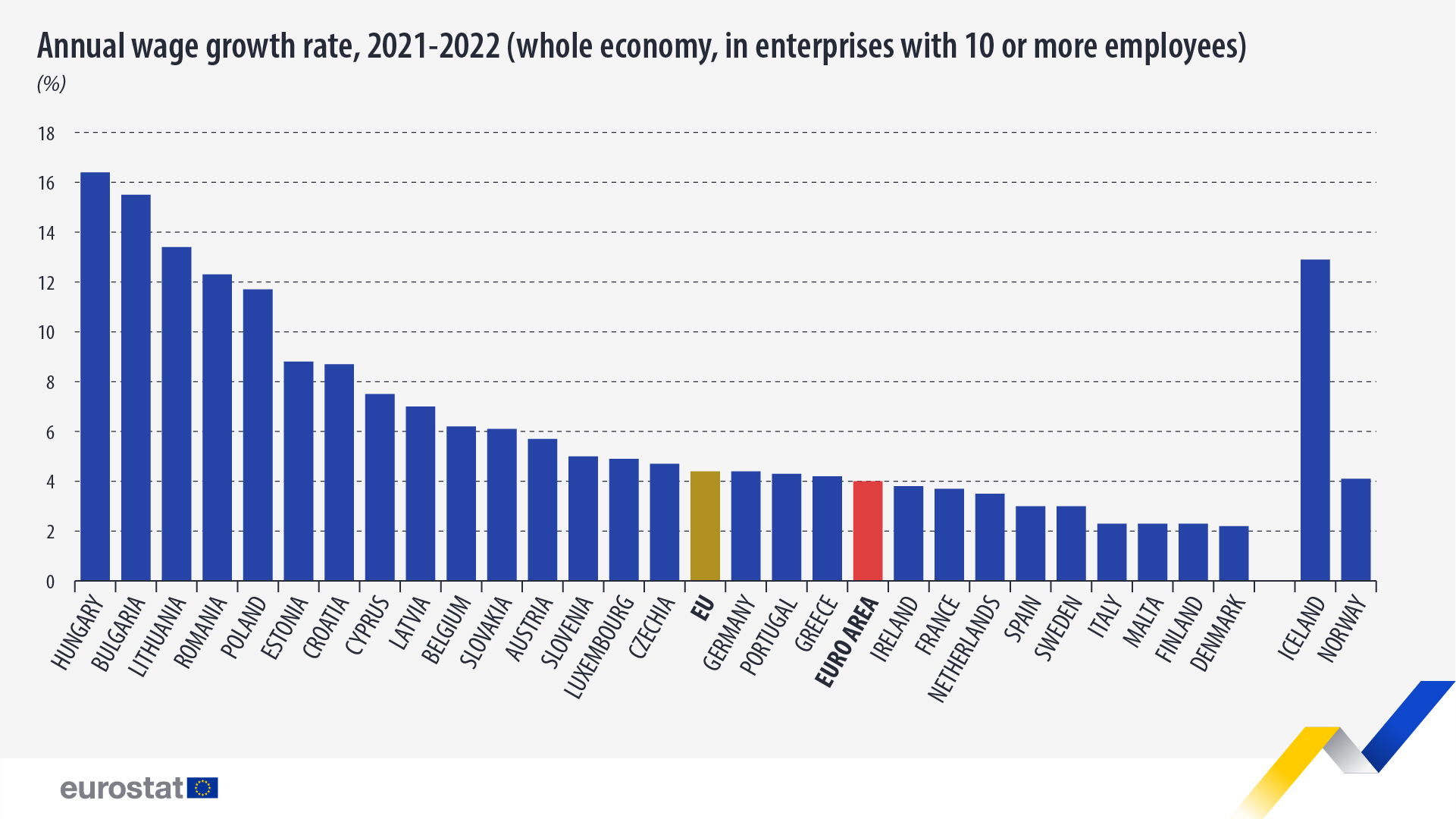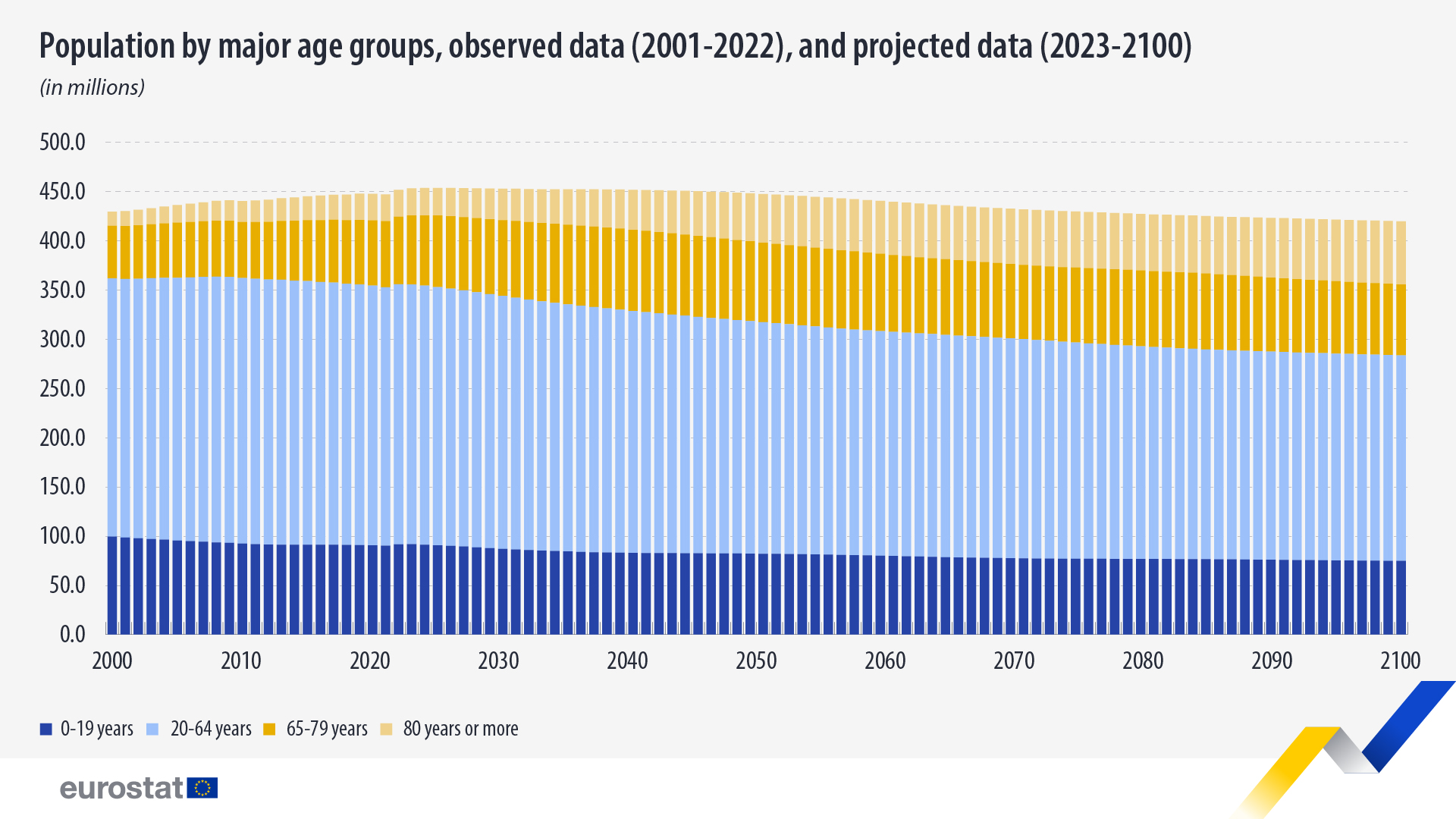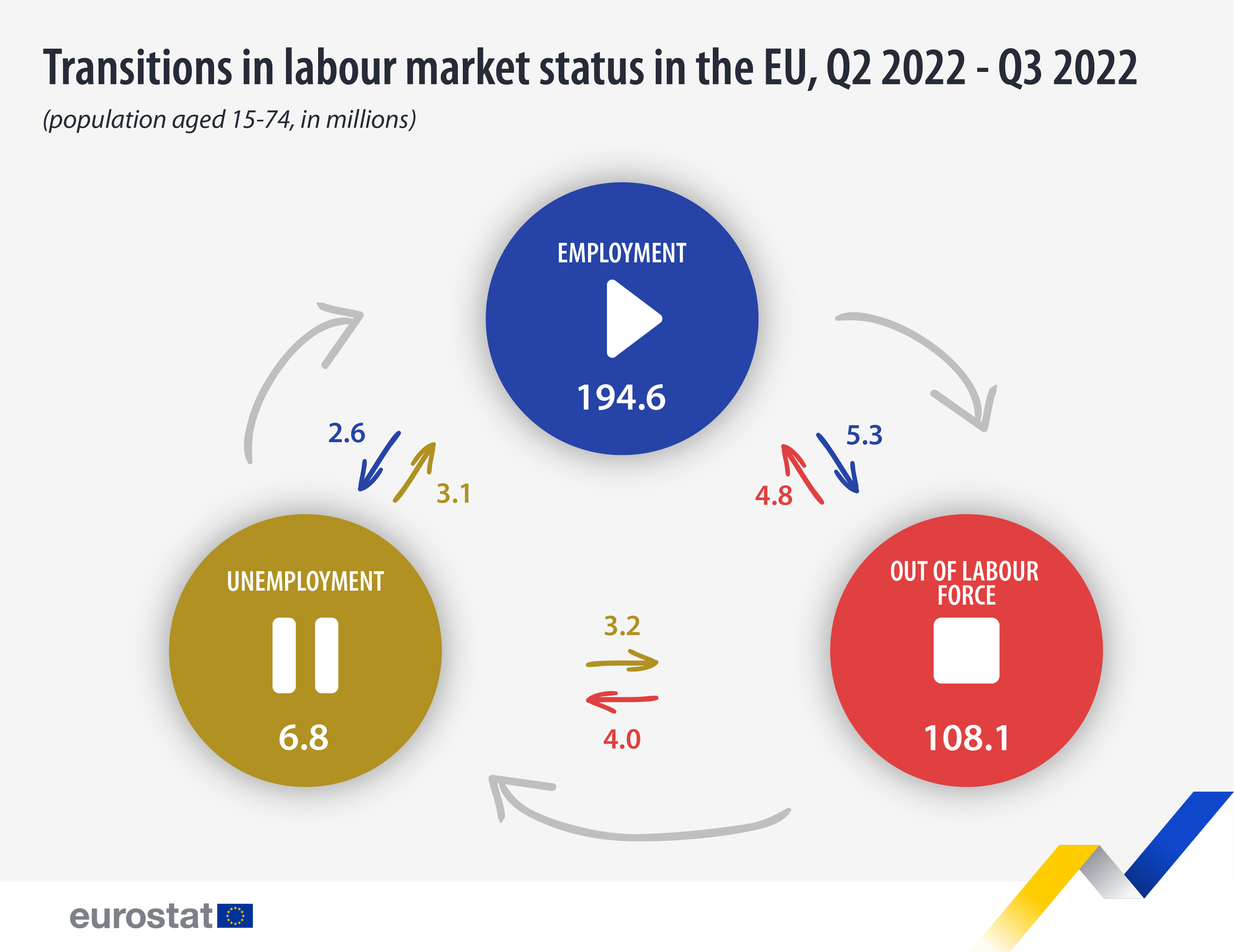In 2022, the average hourly wages and salaries in the whole economy were estimated to be €22.9 in the EU and €25.5 in the euro area.
Statistics
In the fourth quarter of 2022, rents and house prices in the EU increased compared with the same period in 2021, with a 2.5% rise in rents and a 3.6% increase in house prices.
According to the latest population projections issued by Eurostat, the EU’s population will decrease by 6% between 1 January 2022 and 1 January 2100, equivalent to 27.3 million fewer people.
In 2021, 77% of women aged 25-54 without children were employed in the EU. On the other hand, women of this age with children had a lower employment rate (72%; -5 percentage points).
In 2021, there were 3.0 million unemployed young people (aged 15-24 years) in the EU and the youth unemployment rate was 16.6%.
Energy for heating and cooling represents almost 50% of the EU’s total gross final energy consumption.
Ηousehold consumption expenditure in the EU increased In 2021 by 4.2% compared with 2020, but is still 4.1% lower than in 2019.
Rents and house prices in the EU continued to increase in the third quarter of 2022, going up by 2.1% and 7.4%, respectively, compared with the third quarter of 2021.
In September 2022, 89 590 first-time asylum applicants (non-EU citizens) applied for international protection in the EU Member States, 11 995 more people than in the previous month, an increase of
Between the second and the third quarter of 2022, 3.1 million unemployed people in the EU (23.4% of all unemployed in the second quarter of 2022) found a job.









